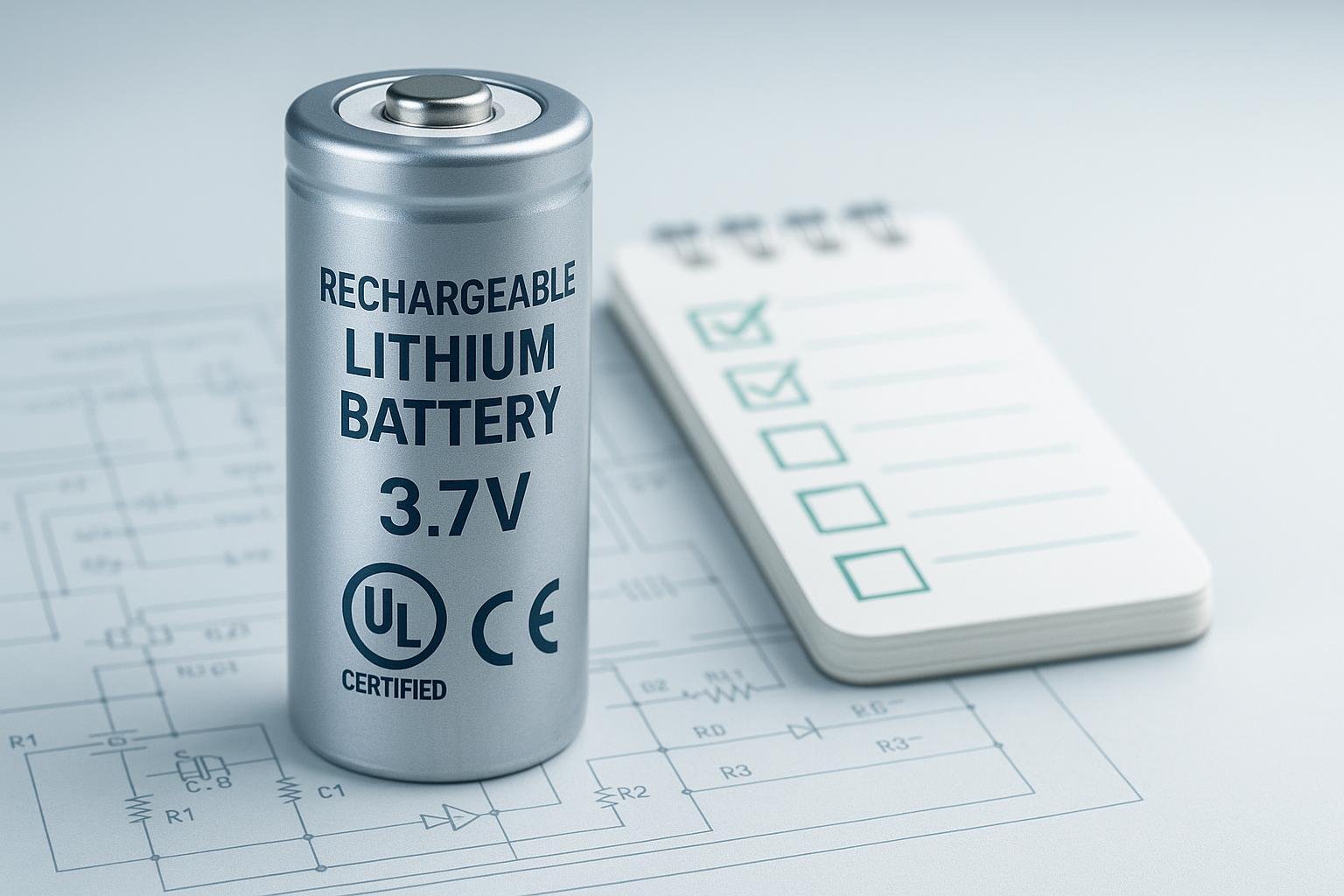
When it comes to picking the perfect 3.7V rechargeable lithium battery—whether it’s for a smart device prototype, industrial equipment, or your next DIY masterpiece—the stakes are higher than you think. The right choice can mean the difference between safe, reliable operation and frustrating failures… or even safety hazards! Before you hit “add to cart,” run through these five critical checkpoints to dodge the most common pitfalls and ensure your device always has the power it needs.
1. International Safety & Certification Marks
Why it matters: Safety first! Professional, compliant batteries display certification marks—like UL, CE, and UN38.3—that indicate rigorous independent testing for electrical safety, fire resistance, and global shipping compliance. Missing or fake marks are major red flags.
How to check: Always inspect product listings, datasheets, and manufacturer sites for visible certification labels. Request test reports or certificates—genuine suppliers will share them. Some standards worth knowing:
Pro tip: Beware of deals that seem too good to be true—counterfeit batteries often skip on certifications and can be hazardous.
2. Battery Capacity & Performance
Why it matters: Not all 3.7V lithium batteries are created equal! “Capacity” (measured in mAh) determines how long your device can run per charge. Too low, and you’ll be swapping batteries constantly. Also check actual discharge rates for performance under load.
How to check: Confirm your device’s peak current demands and needed run times, then select a battery with the right capacity—never trust wildly exaggerated specs. Ask for third-party test data or check independent reviews (like those found at Battery University).
Red flag: Some low-quality batteries exaggerate mAh ratings; cross-reference with trusted databases or ask for real test reports.
3. Physical Size & Compatibility
Why it matters: It has to fit! Even the perfect battery on paper is useless if it doesn’t fit your device, docking bay, or connector style. Mismatched sizes are a classic DIY headache.
How to check: Double-check all physical dimensions (length, width, thickness) and connector types before buying. Cross-reference with the technical schematic of your device, and—if possible—test-fit a sample from the supplier. A mismatched battery can lead to unsafe installation or damaged terminals.
Quick tip: When in doubt, ask for a spec sheet or a sizing diagram from the manufacturer.
4. Supplier Reliability & Warranty
Why it matters: Even stellar specs mean little if your supplier disappears the moment there’s an issue. Reliable vendors offer transparent warranty policies, authentic certifications, and responsive customer support—these are make-or-break for long-term satisfaction.
How to check: Look for established suppliers with a track record, warranty documentation, and plenty of real, positive customer feedback. Battery forums and third-party review sites are great resources (Trustpilot, Better Business Bureau).
Actionable tip: Always clarify warranty terms and support before placing a bulk order.
5. Technology Type & Latest Trends (2024 Update)
Why it matters: The world of lithium batteries is evolving fast! Standard Li-ion types are everywhere, but newer chemistries (like LiFePO4 or even solid-state variants) offer better safety, cycle life, and performance. Batteries with smart BMS (Battery Management Systems) add another layer of protection.
How to check: Assess whether your project benefits from newer tech or standard cells. Research what’s trending for your application (Energy.gov’s Battery Primer).
Pro tip: Don’t blindly chase the latest chemistry—match features to your project’s actual needs.
📝 Quick Reference: 3.7V Lithium Battery Buyer’s Checklist
| Factor | What to Check | Red Flags |
|---|---|---|
| Safety/Certifications | UL, CE, UN38.3 marks; ask for original certificates | No markings, fake documents |
| Capacity & Performance | Required mAh, discharge/current specs, real test data | “Too good to be true” ratings |
| Size & Compatibility | Matching dimensions + connector type | Doesn’t fit; confusion on terminals |
| Supplier Reliability & Warranty | Track record, warranty terms, 3rd-party reviews | No policy, poor ratings |
| Technology & Latest Trends | Li-ion vs alternatives (LiFePO4, solid-state, BMS) | Obsolete or unproven tech |
Conclusion & Next Steps
Smart buyers know: the details matter! Run through this checklist before every purchase for safe, reliable power. Want an easier buying experience? Bookmark authoritative guides or download a printable checklist for sourcing your next batch of 3.7V rechargeable lithium batteries. Stay wired—stay safe!

